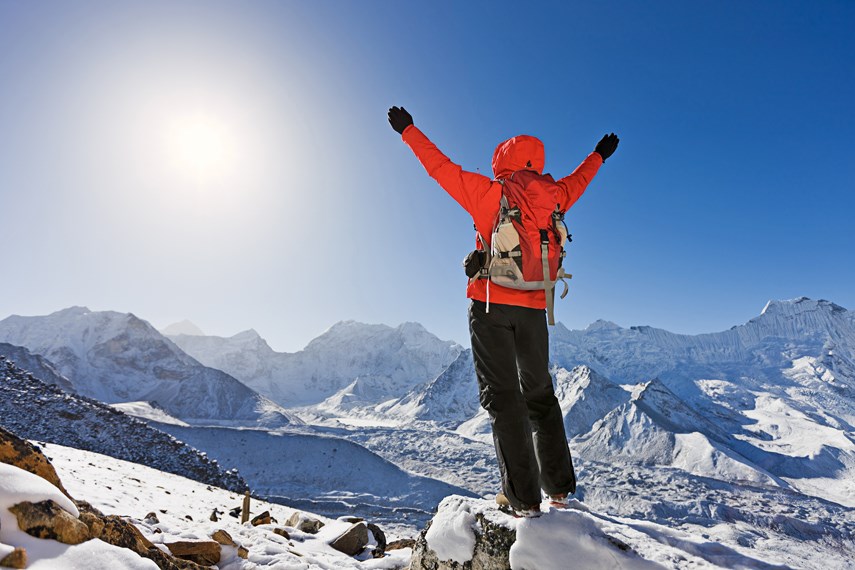Great news for all of you who enjoy spending entire days going up hills but are less interested in walking past fields of frozen human waste and dead bodies.
This year’s hottest pandemic fitness trend involves most of the fun of scaling Mount Everest without actually having to go to the Himalayas and climbing to the top of the largest mountain in the world.
“Everesting” is the COVID-19 craze that is keeping fitness fanatics racing even while gyms and events are shut down. It involves finding a local mountain or hill or whatever and cycling up it over and over and over again until you’ve matched the elevation gain it would take to scale Mount Everest.
On the surface, it sounds like an absolutely terrible idea. But, let’s compare it to the actual act of climbing Mount Everest and see which one comes out on top.
I’ve never quite understood the appeal of climbing Mount Everest. No doubt there are people out there for whom these types of conquests are of vital importance, driven by the elusive bucket list goal of literally standing on top of the world. “Get busy living or get busy dying,” they’d say.
But about that dying. They call the final 3,000 feet of the Mount Everest climb the “death zone,” and there is seemingly a good reason for it. They say the air is so thin up there, so lacking in oxygen, that each breath you take sucks a little more life out of you.
This seems like a rather odd setup for those of us accustomed to the more traditional process of taking breaths to sustain life. Some people near the top of Everest get deprived of oxygen, get lethargic and bummed out, and then just sit down on the side of the mountain and never get up again. Now I don’t know about you, but if I spent around $100,000 dollars to go on some extreme adventure and then just ended up sitting down and dying, I’d feel like a real Goomba.
Reportedly around 300 people have died climbing Mount Everest, and more than half of them just get left up there because no one has the strength to haul a carcass out of the death zone.
And what about the poo!?! Some observers estimate that more than 25,000 pounds of human waste are dumped on the slopes of Everest every year, prompting a mountaineer to quip in a Washington Post op-ed that the peak of Everest had become a “fecal time bomb.” A 2013 article in National Geographic described “pyramids of human excrement befouling the high camps” of the mountain. Talk about a bucket list!
There is some evidence too that scaling Everest is not the exclusive opportunity it once was. In recent years, climbers have come down the mountain to report there were long lineups at the summit as climbers waited for their chance to stand on the peak for 20 minutes.
Disneyland, with a death zone!
Now we have Everesting, which includes much of the pain of climbing Everest without all the poo. The basic plan is you pick any hill and go up and down it on your bike until you reach 29,029 feet of climbing. To make it legit you do it in one shot – no sleeping – and you can have food and moral support on your ride, but all of the motion must happen under your own power.
The concept has been around since 2014 but has exploded in popularity under the restrictions of COVID-19, helped along by a feature which ran in the New York Times a few weeks ago. The Times piece was written by Alec Jacobson, who gave a first-hand account of Everesting Mount Seymour right here in North Vancouver.
“The feat is a contrived festival of suffering that plays out on a climb of no real significance and often little beauty,” Jacobson wrote. Wow, where do I sign up? Hell?
The North Shore with its well-heeled (and well-thighed) population is a perfect target group for a challenge such as this, and the mountains are right there for the climbing.
My work email inbox is filling up with Everesting tales that I haven’t had a chance yet to tell. There was the New West cop who rode Seymour from dusk to dawn for charity, a North Vancouverite who put her own twist on the feat by turning it into a double Everest run completed in one week, and a New Zealander who spent 24 hours mountain biking up and down Fromme to push past the Everest height. His entertaining tale shares some of the fun of the actual Everest due to stomach troubles near the end of his ride.
“In hindsight, eating 1.15 kilograms of potatoes in 12 hours was a bad idea,” he writes.
But is Everesting a bad idea? For me that’s a hard yes, but for many others it seems to be the goal that keeps them moving in these troubled times.
Maybe things have flipped in the summer of 2020. Maybe it is worth it to go searching for solace at the top of a mountain when everything down below is now the death zone.
If you’ve gotta go, then go. But please, try to make sure your route has a bathroom.
Andy Prest is sports editor for the North Shore News. His humour/lifestyle column runs biweekly. [email protected]
What are your thoughts? Send us a letter via email by clicking here or post a comment below.



